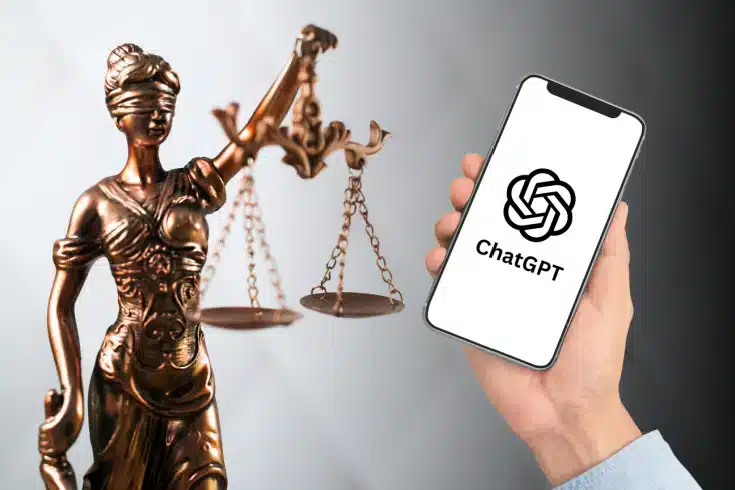What is the Mechanism of Litigation Regarding Domain Transfer Requests?

With the proliferation of the internet, the importance of business activities such as sales and public relations through the internet has increased for businesses, and along with this, domain names have become highly valuable.
If your domain name is taken by another company, it is possible to counteract this by requesting a ‘domain transfer’. In this article, we will explain the solution through litigation among the ‘domain transfer requests’.
The Risk of Others Acquiring Your Company or Product Name Domain
It is essential to prevent other companies or individuals from acquiring the domain names of your company or products. Not only does this prevent you from operating a site under that domain, but it also exposes you to the risk of becoming involved in issues such as cybersquatting, or the illicit acquisition of domains.
Cybersquatting refers to the act of registering domain names that are likely to become valuable in the future, such as the names of growing companies or products, with the intention of selling them at a high price once they have grown. It can also involve using a well-known name in a domain name to intentionally cause confusion or misrecognition among users, in order to attract them to one’s own website. A famous case in Japan involved an individual who acquired the domain ‘matsuzakaya.co.jp’ before the department store Matsuzakaya could, and operated an adult site with this domain, attempting to sell it to Matsuzakaya at a high price.
Request for Domain Transfer
Against such cybersquatting, it is possible to counteract through a method called “request for domain transfer”.
There are two routes for a domain transfer request.
- Dispute Resolution
- For JP domain names, you can request dispute resolution from a dispute resolution organization certified by JPNIC (Japan Network Information Center), based on the “JP Domain Name Dispute Resolution Policy” established by JPNIC. The complainant can request the cancellation of the registrant’s domain name registration or the transfer of the said domain name registration to the complainant.
- For general domain names, you can request dispute resolution from a dispute resolution organization certified by ICANN (Internet Corporation for Assigned Names and Numbers), based on the “Uniform Domain Name Dispute Resolution Policy” established by ICANN. The complainant can request the cancellation of the registrant’s domain name registration or the transfer of the said domain name registration to the complainant.
- Litigation
- You can file a lawsuit in court and have it processed based on the Japanese Unfair Competition Prevention Act.
You can file a lawsuit in court and have it processed based on the Japanese Unfair Competition Prevention Act.
Dispute resolution is simple and does not take much time (up to 57 days at most), but it does not have legal binding force. Also, a party dissatisfied with the decision in the dispute resolution can file a lawsuit in the jurisdictional court, so it is not the final decision. For more information about this dispute resolution, please refer to another article on our site, “A Lawyer Explains Cancellation or Transfer of Domain Names”.
Illicit Acquisition of Domain Names and Unfair Competition

The act of illicitly acquiring domain names is considered one form of unfair competition under the Japanese Unfair Competition Prevention Act.
Article 2: In this Act, “unfair competition” refers to the following:
Japanese Unfair Competition Prevention Act, Article 2
19. Acquiring or holding the right to use a domain name identical or similar to another person’s specific product or service mark (referring to names, trade names, trademarks, emblems, and other items that indicate products or services related to a person’s business) with the intention of gaining illicit benefits or causing harm to others, or the act of using such a domain name.
In other words, it is considered “unfair competition” if one ① acquires or holds the right to use a domain name identical or similar to another person’s specific product or service mark with the intention of gaining illicit benefits or causing harm to others, and ② uses such a domain name.
Not only domain names ending in “.jp” (Japan’s country code), but also those of other countries (such as “.uk”, “.kr”, “.de”, etc.) and generic domain names that do not end with a country code (such as “.com”, “.net”, “.org”, “.info”, etc.) are all subject to the Japanese Unfair Competition Prevention Act.
The act of illicitly acquiring domain names can be addressed by filing a lawsuit in court based on the Japanese Unfair Competition Prevention Act. This is the aforementioned “litigation” route.
The Effectiveness of the Japanese Unfair Competition Prevention Act
Those who have had their business profits or credibility infringed upon due to unfair competition (companies) can demand ① cessation of domain name usage (Article 3 of the Japanese Unfair Competition Prevention Act), ② compensation for damages (Articles 4 and 5 of the same Act), and ③ measures to restore credibility (Article 7 of the same Act).
According to the Ministry of Economy, Trade and Industry’s “Guidelines on Unfair Acquisition of Domain Names: Guidelines on E-commerce and Information Property Transactions”, there have been court cases and private dispute resolution cases where ① the acquisition or use of a domain name was recognized as having an unfair purpose, and ② the domain name was recognized as being identical or similar to someone else’s goods or trademarks.
Cases Where Domain Name Acquisition or Use is Deemed for Unlawful Purposes
So far, there have been several instances that fall under the category of “Cases where domain name acquisition or use is deemed for unlawful purposes” as mentioned above. These include:
- Acquiring a domain name identical or similar to the trademark of a well-known business, and using the business’s reputation and customer appeal to sell products.
- Acquiring and using a domain name identical or similar to the trademark of a well-known business, and displaying defamatory content about the business on the website, aiming to damage its reputation.
- Using a domain name identical or similar to the trademark of a well-known business to set up a pornographic website.
- Using a domain name identical or similar to the trademark of a well-known business with the intention of redirecting it to one’s own website.
- Acquiring a domain name identical or similar to the trademark of a well-known business, and continuing to hold the domain name with the intention of preventing the business from setting up a website and conducting business.
- Registering a domain name identical or similar to the trademark of a well-known business, and demanding an unreasonable price for the transfer of the domain name, suggesting that the purpose is to resell the domain name.
Such cases are likely to be considered as unfair competition under the Japanese Unfair Competition Prevention Act.
Cases Recognized as Identical or Similar to Other’s Goods or Trademarks
So far, there have been several examples of cases where a domain name has been recognized as identical or similar to another’s goods or trademarks, as mentioned in the above point ②. These include:
- “jaccs.co.jp” and Japanese JACCS
- “j-phone.co.jp” and Japanese J-PHONE
- “sunkist.co.jp” and Japanese SUNKIST, Sunkist
- “sonybank.co.jp” and Japanese SONY
- “itoyokado.co.jp” and Japanese Ito Yokado
- “goo.co.jp” and Japanese goo
Indeed, it can be said that such cases are likely to constitute unfair competition under the Japanese Unfair Competition Prevention Act.
Conditions for Domain Transfer Requests to be Approved
Regardless of the route used, the “rules applied in the process” are almost the same, and generally,
- Your company has a legitimate interest or similar in using the domain
- The other party does not have a legitimate interest or similar in using the domain
If the above two conditions are met, a domain transfer request can be approved.
However, to claim the above “legitimate interest or similar”, you basically need trademark rights. In other words, it may not be enough to simply say, “My company has a legitimate interest or similar in using the ‘Monolith.com’ domain because we are selling a beer called ‘Monolith Beer'”. It is more certain to claim, “My company holds the trademark rights to ‘Monolith Beer'”.
When the Other Party Holds the Same Trademark
Now, let’s consider a scenario where your company holds the trademark for “Monolith Beer”. Can we say that the party who owns the “Monolith.com” domain has no “legitimate interest”? This is a crucial point.
A trademark right is a right that prohibits:
- Other companies across Japan
- From using the same or similar name (mark) in the same or similar field (classification)
This means that even if your company has obtained a trademark right, there may be other companies in different fields (classifications) that hold a trademark right for the same name.
Furthermore, a domain is unique worldwide and is not related to the “field (classification)”. Moreover, it is possible for one company to acquire all “.com”, “.net”, and “.jp” domains. Among companies that hold the same trademark, it becomes a complete “first come, first served” situation.
Summary
In the internet age, both trademark rights and domains are extremely important for business.
It is necessary to understand the basics of trademarks and domains, and their relationship, for deciding on company names and product names.
Category: IT
Tag: ITSystem Development





















